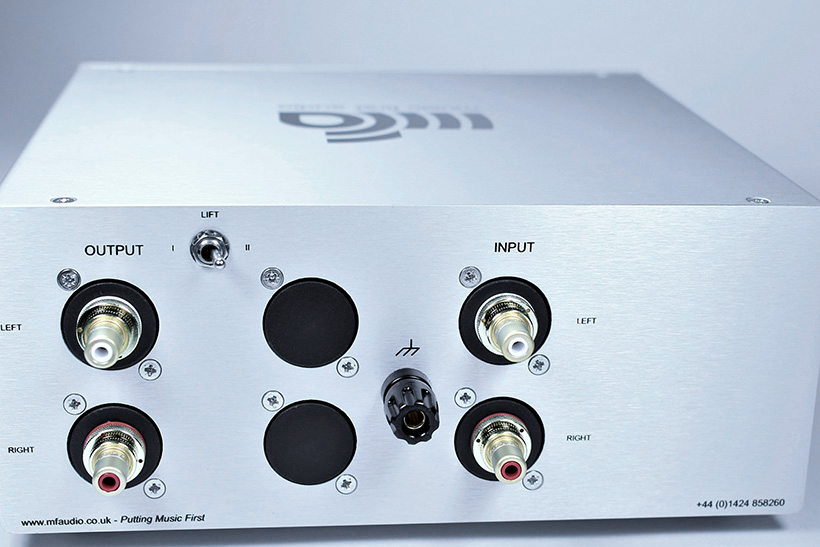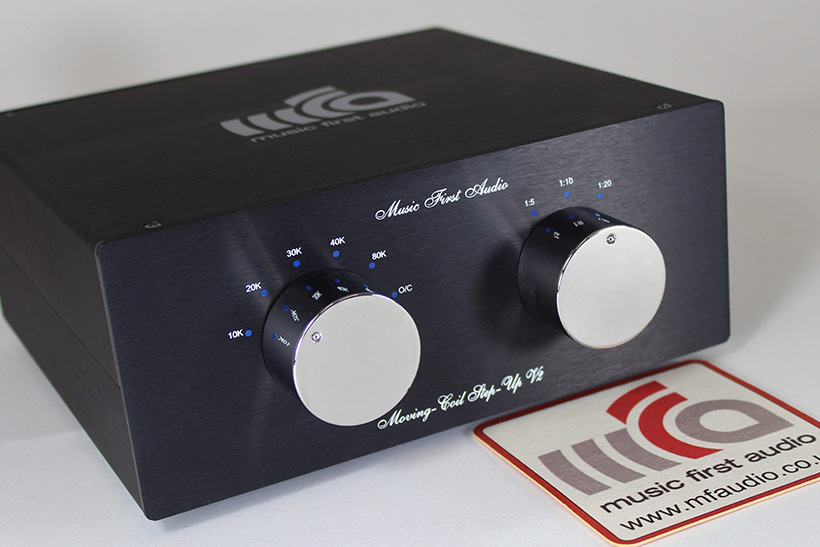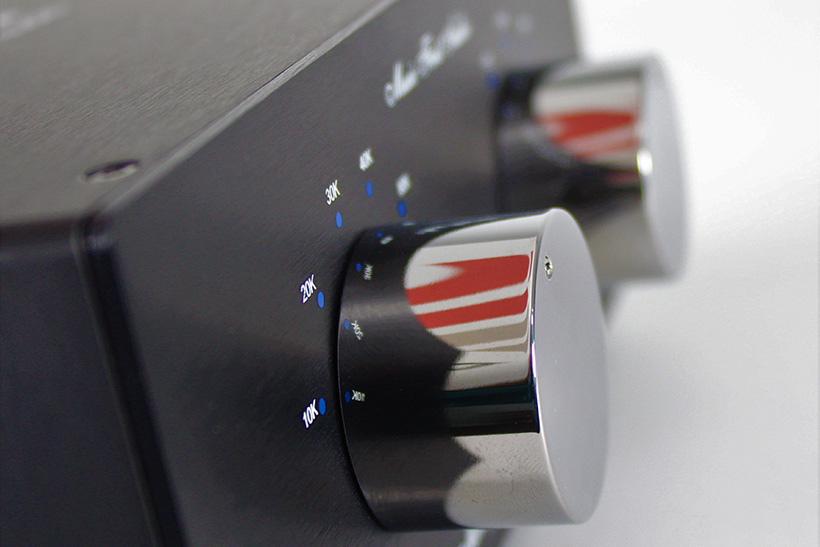Where would we be without vinyl? Whether you love it or hate it, it’s been a major element of home music replay for many decades from its earliest beginnings in the heady days of acoustic shellac discs to the refined electronics and modern pressings we can enjoy today.
Not that it’s without its foibles. Talk to any turntable lover and it’s likely that in fairly short order you’ll find yourselves discussing the vagaries or benefits of different stylus shapes, Lofgren vs Baerwald (or other) tracking gauges, VTA, direct-drive vs belt drive vs idler drive, and so the list goes on. Somewhere in the mix is the thorny old debate of moving coil vs moving magnet cartridges.
Now comes the tricky bit. The majority (broad brush generalisation) of built-in phono stages in preamps are optimised for moving magnet cartridges. Why? Primarily for two reasons. The first is that they require less gain than a moving coil – so keeping the noise down to an acceptable level is relatively easy. Relatively. The second reason is that MM cartridge loading has pretty-much been standardised no matter which manufacturer’s cartridge you decide to stick on the end of a tonearm. So within reason moving magnet phono sections have a ‘standard in – standard out’ function to perform.

Moving coil cartridges are a rather more complicated kettle of fish. Cartridge output and required loading can vary enormously, both within makes, and across the board. Some cartridges require very low impedance matching (a matter of a few ohms), others something considerably higher – of the order of k-ohms. Some are very low output, while others have an output which rivals a moving magnet’s.
What are the options?
Well, the very few that are designed to play into a moving magnet input we can dispense with – they require no additional consideration and are effectively ‘plug in, set up and play’. The rest need either some form of step-up to raise their output sufficiently for a moving magnet input (either a step-up transformer, or an electronic gain stage), or they need a whole dedicated phono stage which will not only provide the RIAA equalisation but also provide the gain to produce a line-level output.
Sharp-eyed readers will have noticed that this review is about Music First’s latest step-up transformer, so we’ll not be covering electronics, phono amps or anything like that. This is simply about a step-up transformer. But this one is slightly different in that some elements of its performance depend on which setting you choose. On this rather seductive piece of kit (who said a transformer can’t be gorgeous?) there are two not-so-subtle chrome knobs, one with a range of cartridge loading settings, the other with a range of ‘gain’ settings. Cartridge loadings are noted as 10k, 20k, 30k, 40k and 80k, with an O/C which offers basically ‘straight in’. Output wise there are options of 1:5, 1:10 and 1:20. The manual includes a chart which tells you how to combine these settings to give a wide range of 18 effective loadings, from 20 Ohms up to 1,880 Ohms. The rear panel sports two sets of connections, there is also a three-position switch which offers different permutations of ground connection or lift to cater for nullifying any potential hum. So, just to clarify, this delightful piece of kit sits between a moving coil cartridge and a standard moving magnet (phono stage) input. It contains no RIAA circuitry, has no power supply and is a passive unit.

As many will know, as a reviewer, I am not interested in ‘the numbers’ or the particular topology, technical reasons why or which flavour wood is used in any hi-fi gear. I’m more interested in how the piece of kit sounds, and whether it does the job the manufacturer claims it does. So all I did was plug it in, and play some records. The cartridges used included an Audio Note (Kondo) Io, an Audio Technica Art 9, a Clearaudio Insider and an Ortofon Quintet Black, mounted in an SME 312S on an SME 20 turntable.
Sound quality
First record to hit the platter was Thurston Dart’s (now venerable) performance of Dido and Aeneas on L’Oiseau Lyre under Anthony Lewis (SOL60047). The French overture was full of life and zip, and the MFA unit showed no tizz at the top, portraying the upper strings with clarity and brilliance. Bass weight was also remarkably good for a recording of this age. There was none of the stridency that sometimes afflicts upper treble in older recordings, and the MFA unit allowed the sheer brilliance of the string players to shine through. The heart-wrenching (if massively overplayed) Dido’s Lament sung by Janet Baker demonstrated the importance of keeping the noise floor low, as the silences are as much a part of the music as the notes. Here the MFA showed clearly that attention to detail in competent grounding and taking care over signal paths makes a very obvious difference to the final sound.
The most notable thing about the MFA at this stage was the real absence of background noise. My listening space is not electrically quiet, and there’s usually some unwanted ‘hash’ going on in the background. Listening late at night, when the world and the mains is quieter certainly opens the ears to more music and a more defined sense of the recording space. However, even during daytime listening the MFA managed to go a long way towards matching the night-time experience, showing that designer Jonathan Billington has done his homework well.
Setting the gain has some interesting side-effects. Generally-speaking I prefer to have high-gain preamps and slightly less sensitive power amps. So initially I wound the MFA up to ‘max’, initially revelling in the huge dynamics. However, it soon became clear that the phono input has limits, and after a while its occasional overload on loud transient peaks became tiresome. The better setting was the 1:10, where though the dynamics were slightly less, nothing was too ‘hot’ for the moving magnet stage, a much better result overall.

Next to spin was Jerry Ricks’ 1987 album Empty Bottle Blues. An interesting foray into the blues genre, with a variety of sometimes gritty tracks. Ricks’ guitar is sometimes strident, other times a little more laid back, but this album, recorded in Budapest somehow managed to make its mark in eastern Europe. Ricks’ legacy (he played with Lightnin’ Hopkins, Jesse Fuller and others) now lives on with the Kastav Blues Festival in Croatia. Ricks’ approach is no-nonsense, and his performances and renditions in many senses are raw and immediate. The MFA’s ability to transfer this oh-so-tiny signal through to the phono stage, preserving the rasp of nail on string, rim shots in all their glory and gravel in Ricks’ voice is a testament to the care with which the transformers in the MFA have been made. ‘Miles’ of fine wire are carefully, consistently and meticulously wound on formers to ensure that as little of that signal is either lost or sullied by outside influences.
London Grammar took centre stage after that, with their album Truth is a Beautiful Thing. Now it has to be said that with the advent of CD and its availability to the masses (before that I suspect reel to reel held sway) really low clean bass was relatively rare. Even on LPs it had to be cut with care, and in the early days of the LP some of the groove excursions could be worryingly wide, challenging the new-fangled stereo cartridges of the day (hence the plethora of test LPs and other ‘helpful’ accessories). While hi-fi aficionados of yesteryear may have striven for deep clean bass, for the mainstream listener it wasn’t so much of a big deal.
You could argue that the likes of Bob Marley brought a greater overall awareness of low bass, and latterly I guess that house, trance and rave music have furthered its inclusion in ‘more mainstream’ music. Many, though, will listen on earbuds or headphones, and apparently this can be quite a satisfying route to take. However, in-ear (or on-ear) listening is not for me, but more modern speakers are able to cope with those lower region excursions very well, as are modern electronics. And while London Grammar can be enjoyed without the lowest notes being audible, it does make the world of difference when you can hear and feel them, properly and cleanly.
The bass is also where transformers can start to gag a bit, and if not well designed and manufactured, cores can saturate. Fortunately the MFA was able to convey these lovely rich deep low notes with ease, and their clean weight added immeasurably to the overall enjoyment of the album, supporting Hannah Reid’s vocals. Classically trained, her voice has a purity (though very different) akin to Hayley Westenra’s and curiously the two are very similar in age. Reid’s timbre is deeper and richer than Westenra’s though, and London Grammar’s mix of classical, ethereal and ambient probably suiting her voice better than Westerna’s repertoire would. With silence and ‘deep dark backgrounds’ being so much a part of London Grammar’s music, the MFA really had to excel, and here playing with the ground switch on the rear panel did make some differences to just how quiet that background could be.

Now, I mentioned that changing the ‘gain’ setting made differences to literally the ‘gain’ of the MFA. But what of the loading? Well, this is probably a sacrilegious thing to say, but it’s almost a very subtle tone control. Moving the selector from one position to another didn’t make any apparent difference to the frequency extremes (which is what I’d expected) but seemed to bring forward or ‘push back’ the middle frequencies. This would appear to be a fine-tuning experiment which will depend very much on the cartridge you choose to use, the capacitance and resistance of any tonearm and connecting cable to the preamp, and almost the sort of sound you are looking for. It’s really worth taking some time to find the optimum setting for your particular set-up. Whichever setting you end up with, you can be sure the MFA will provide the very best signal path possible along the way.
Obviously it’s more difficult using electronic music to try and find a ‘best’ that suits your ears, but for me, as close to a real live acoustic sound is what I’ve always striven for, which is why I use acoustic music predominantly for reviewing purposes. As a classical musician it’s a sound-world that I know well, both as a performer and as a listener. With the Jerry Ricks and the Dido and Aeneas I was happy with the same setting for both. However, moving to the London Grammar I preferred a different setting. What they are is actually irrelevant, but in the context of my system different settings sounded best. The nice thing is that the differences are quite subtle, didn’t impact on the cartridges’ performance in any way and ultimately added to the enjoyment of listening.
Where you put a step-up transformer has a significant effect on its performance. Sitting it on top of a DAC or next to a mains cable is potentially asking for trouble, but I put mine underneath the turntable, on top of my preamp, with a very short cable between MFA and pre. That worked best. Longer leads from MFA to pre did give rise to some aural hash, and rotating the unit around mains cables did give a variety of more noisy signals. The reality, though, is that it’s not overly susceptible to electrical interference, and once in place should give many years of musical enjoyment.
Perhaps the nicest part is that it’s a ‘once only’ purchase. To a greater degree, you can change your cartridge as many times as you like, but the MFA is very likely to have a setting which will allow the sonic virtues of that new cartridge – whatever it may be – to shine through. My overall conclusion is that despite its price (it’s not cheap, but for what it is it’s not expensive) it will provide musical satisfaction for a good many years to come and should be considered a mandatory investment in aural enjoyment. It will allow the very best of your cartridge, and thus your record collection, to be enjoyed.


